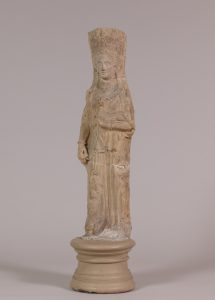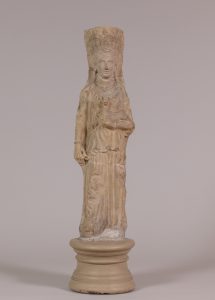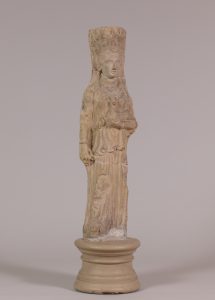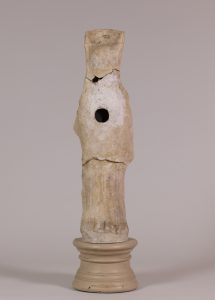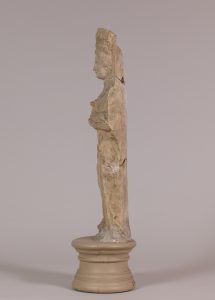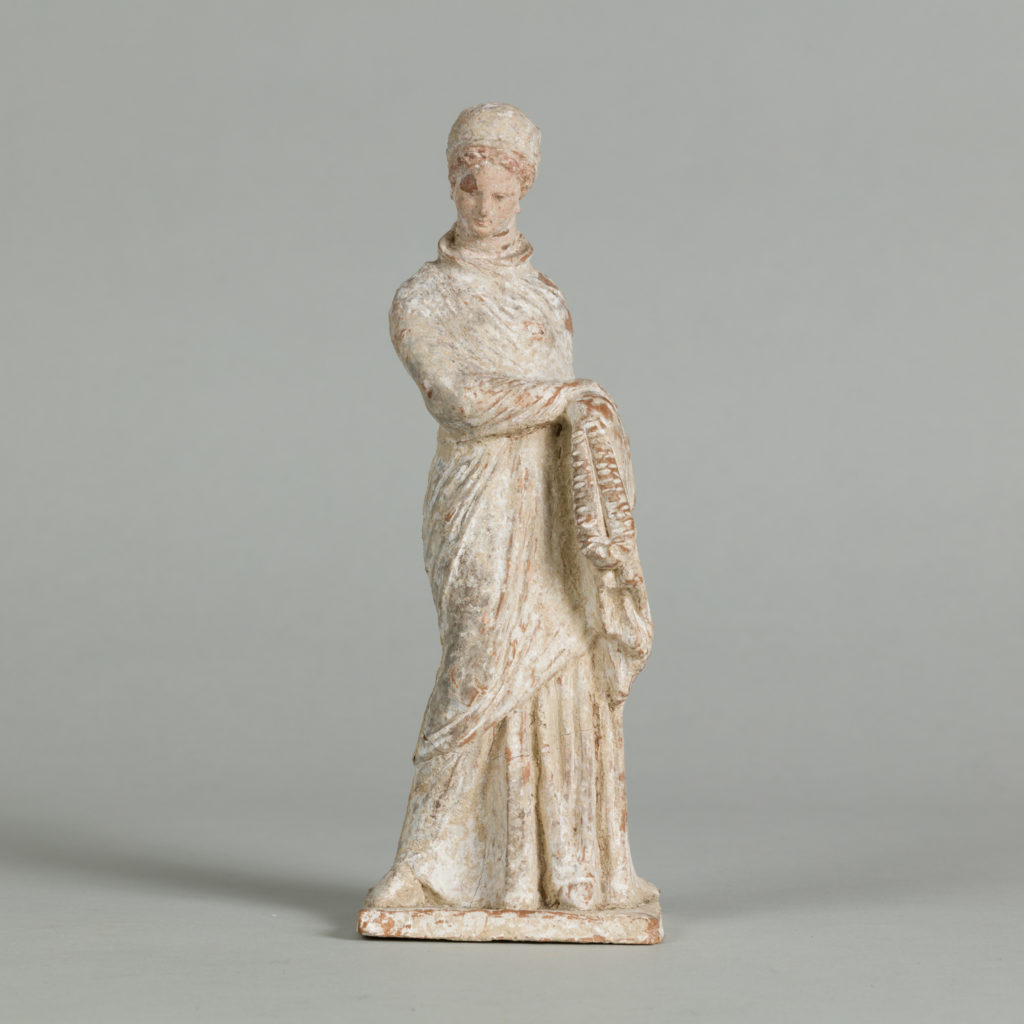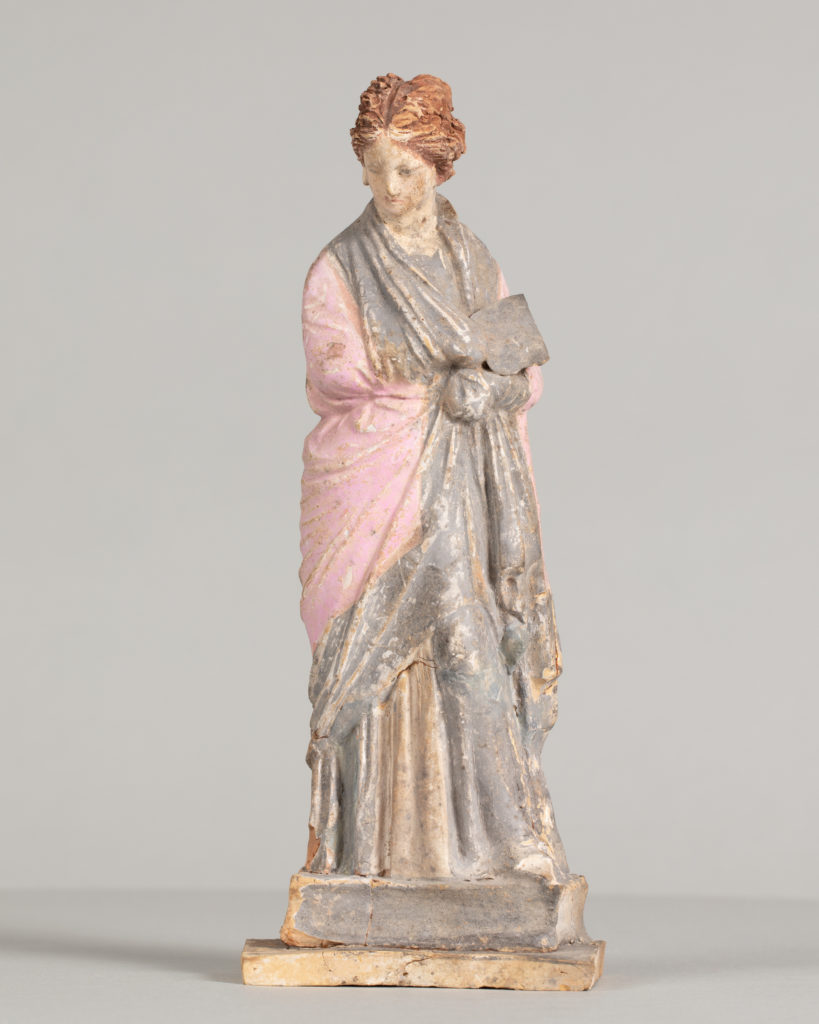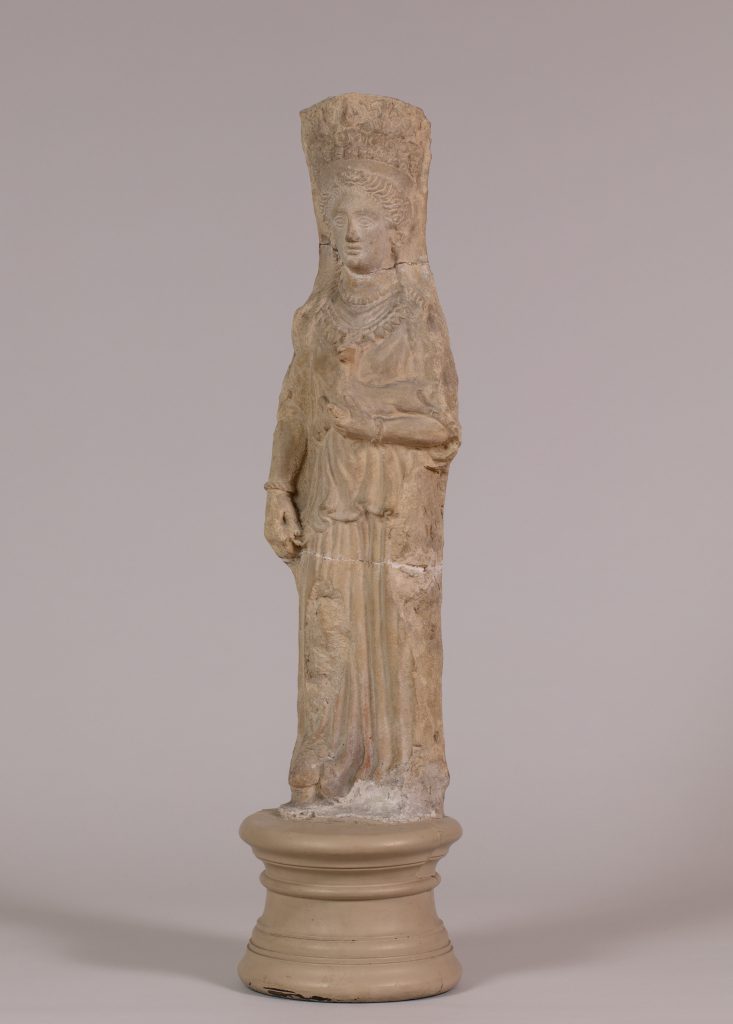



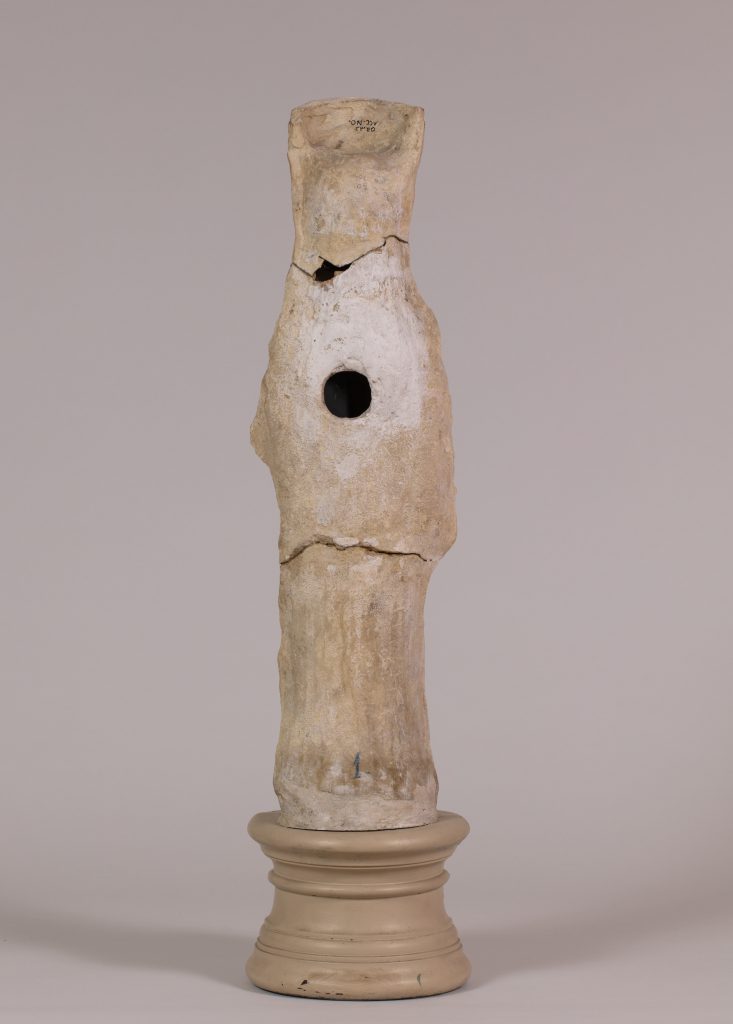
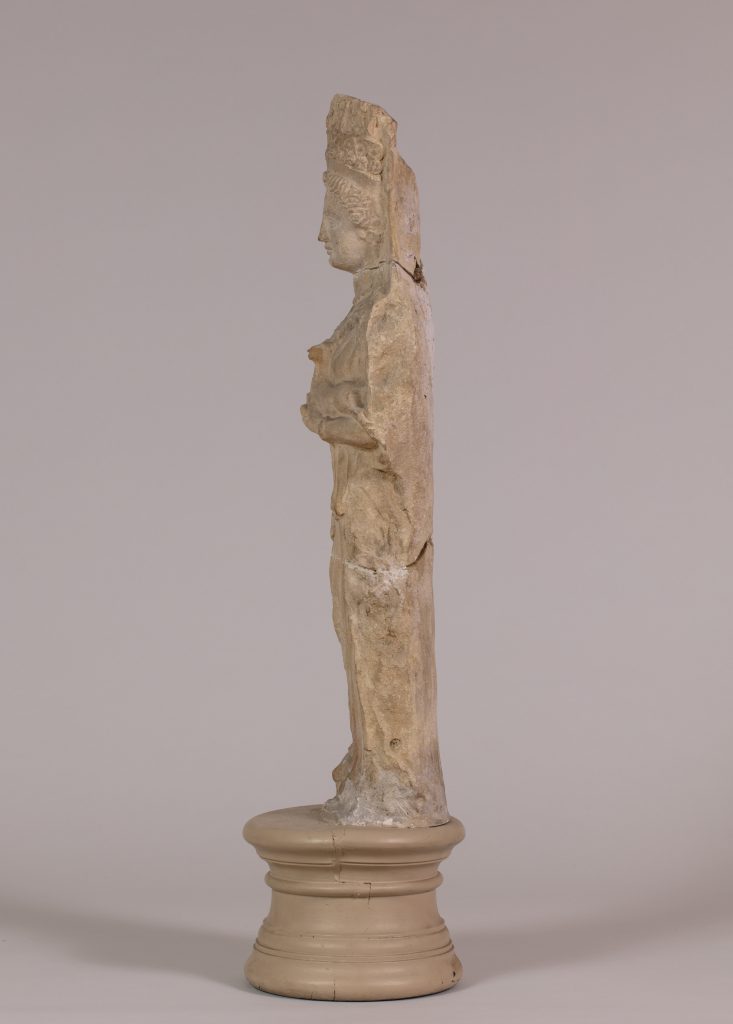
Gift of Mr. Dana C. Estes, Honorary Degree 1898
1902.23This statuette was undoubtedly a figure for a cult shrine. The goddess wears an elaborate kalathos, or basket headdress, decorated with birds, flowers, and rosettes, and holds a fawn in her arms. She is clothed in a simple Doric peplos, common clothing across the Mediterranean in this period, and is bedecked and bejeweled with earrings, necklaces, and bracelets befitting her divine status. Several similar goddess statuettes holding animals were excavated by Alessandro Palma de Cesnola between 1876 and 1879, but this example was the largest and most intact.
Goddess figures of this type, wearing a tall headdress and with various attributes and attendants, are common in Cyprus beginning in the fifth century BCE. Though the precise identification of the goddess is unknown, she is often referred to as the “Great Goddess of Cyprus” and may have been associated with the Greek goddess Aphrodite, the Ancient Near Eastern goddess Astarte, or blended attributes of each. The standing figures may be related to the so-called Kition type terracotta statuette of the same period, who was shown wearing similar clothing but enthroned and often with attendant.
In antiquity, Cyprus was a cultural crossroads and a focal point of successive conquests by the Assyrians, Egyptians, Persians, Ptolemies, and Romans. As one of the largest and easternmost islands in the Mediterranean, it was a place where the cultures of Western and Eastern Mediterranean converged along major seafaring trade routes. At all points in its history, Cypriot art and material culture show a profusion of diverse stylistic influences, sometimes tending towards Greek culture and other times towards the cultures of the Phoenicians and the Near East. As a geographical crossroads, many imported goods from across the Mediterranean could be found in Cyprus, including at various points Greek vases, Egyptian faience, and Roman wares.
The ancient history of Cyprus first came to the world’s attention through the excavations of a pair of brothers from Sardinia: Luigi (1832–1904) and Alessandro Palma di Cesnola (1839–1914). Both men were itinerant soldiers and later served as diplomats for the United States in Cyprus. They were also amateur archaeologists whose excavations at several important sites in Cyprus uncovered tens of thousands of ancient artifacts, and the very presence of Cypriot antiquities in American and European museums can be traced to the Cesnola brothers’ activities. The questionable nature of some of the brothers’ activities came under criticism in their own day, as it has in ours; their excavations were often unpermitted, either by Ottoman or later British authorities, and in 1878 Alessandro was tried and convicted in British court of violating a ban on excavations.
Luigi sold much of his collection to the Metropolitan Museum of Art, where he was later appointed the first director (1879–1904). Many of Alessandro’s finds went to his father-in-law, E. H. Lawrence, a London stockbroker who financed Alessandro’s excavations. In turn, Lawrence sold off much of the collection in a series of London sales between 1883 and 1892. These sales found many buyers and account for the presence of Cypriot antiquities in collections across Europe and America. Dana Estes is known to have purchased many artifacts once in the Lawrence-Cesnola collections, likely from one or more of the London sales.
1876–8, excavated in Cyprus by Major Alessandro Palma di Cesnola under the patronage of Edwin Henry Lawrence; 1879, Lawrence-Cesnola Collection, London; 1892, purchased by Dana C. Estes at Sotheby, Wilkinson, and Hodge auction, London; acquired by Bowdoin College Museum of Art in 1898, gift of Dana C. Estes.
Collector
Maine native Dana C. Estes (1840–1909) was a founding partner of a prominent Boston bookseller and publishing house, Estes & Lauriat (est. 1872), which later operated as Dana Estes & Co. (1898–1909).
